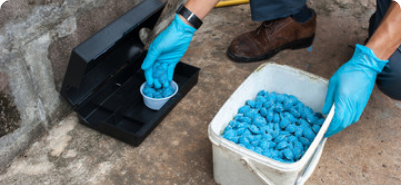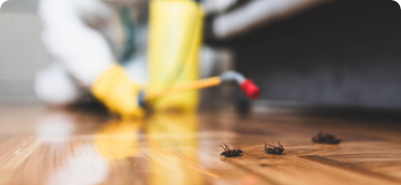Termites pose a significant threat to homes across Australia, particularly in Sydney, where the warm climate creates an ideal environment for these destructive pests, making the pest control industry crucial for homeowners. Homeowners often face the daunting task of dealing with termite infestations, which can lead to extensive damage if not addressed promptly. One of the most pressing questions that arises in this context is whether the cost of termite treatment is covered by insurance. This article aims to clarify this issue and provide insights into what homeowners can expect regarding insurance coverage for termite treatment.
Understanding Termite Damage
Termites are often referred to as “silent destroyers” due to their ability to chew through wood, flooring, and even wallpaper undetected. In Sydney, where many homes feature timber structures, the risk of termite attack and infestation is particularly high. The damage caused by termites can lead to costly repairs, making it essential for homeowners to take preventive measures and seek treatment when necessary. These pests thrive in warm, humid environments, which makes the coastal climate of Sydney particularly conducive to their proliferation. Homeowners should be vigilant, as the presence of termites can compromise the structural integrity of their homes, leading to potential safety hazards.
What is Termite Damage and How Does it Occur?
Termite damage occurs when termites infest a property, feeding on wood and other cellulose-based materials. This can lead to significant structural damage, compromising the integrity of the building. In Sydney, where many homes are constructed with timber, the risk of termite damage is particularly high. Termites can cause damage to walls, floors, ceilings, and even foundations, resulting in costly repairs. In severe cases, termite damage can render a property uninhabitable.
Termites can infest a property through various means, including:
- Soil-to-wood contact: Termites can enter a property through soil-to-wood contact, such as when wood is in direct contact with the soil.
- Cracks and crevices: Termites can enter a property through cracks and crevices in walls, floors, and ceilings.
- Infested materials: Termites can be introduced to a property through infested materials, such as second-hand furniture or building materials.
Regular termite inspections can help detect termite activity early, preventing significant damage and costly repairs. By being vigilant and proactive, homeowners can protect their properties from these destructive pests.
The Importance of Early Detection
Early detection of a termite infestation can save homeowners significant amounts of money. Signs of termites include mud tubes, discarded wings, and hollow-sounding wood. The importance of termite inspections in Sydney is crucial. Regular inspections by pest control professionals, through a comprehensive termite inspection service, can help identify these signs before they escalate into a full-blown infestation. However, once termites have established themselves, the treatment process can be both time-consuming and expensive. It’s worth noting that some species of termites can cause damage at an alarming rate, with certain colonies capable of consuming a pound of wood in just a few days. Therefore, homeowners should not only be aware of the signs but also consider seasonal inspections as part of their home maintenance routine.
Types of Termite Treatments
There are several methods for treating termite infestations, including chemical treatments, baiting systems, and physical barriers. Implementing an effective termite management system is crucial for long-term protection against infestations. Chemical treatments involve the application of insecticides to eliminate termites, while baiting systems attract termites to a bait that contains a slow-acting insecticide. Physical barriers, such as steel mesh or concrete, can prevent termites from entering a structure altogether. Each method has its advantages and costs, which can vary significantly based on the severity of the infestation and the size of the property. Furthermore, homeowners should also consider eco-friendly alternatives, such as nematodes or borate treatments, which can be less harmful to the environment while still effectively managing termite populations. Understanding the various options available allows homeowners to make informed decisions that best suit their needs and circumstances.
Insurance Coverage for Termite Treatment
When it comes to insurance coverage for termite treatment in Sydney, the situation can be quite complex. Most standard home insurance policies do not cover damage caused by termites, as infestations are generally considered a preventable issue. Insurers typically expect homeowners to take reasonable steps to protect their properties from pests, which is why comprehensive termite inspections and damage prevention are often excluded from coverage.
What Does Home Insurance Typically Cover?
Home insurance policies usually cover sudden and accidental damages, such as those caused by fire, storms, or theft. However, damage resulting from pests like termites is viewed differently, and a thorough termite inspection is often required to assess the extent of the damage. Insurers often classify termite damage as a maintenance issue, which falls under the homeowner’s responsibility. This means that unless a specific endorsement or rider is added to the policy, termite treatment costs are unlikely to be covered.
How to Make an Insurance Claim for Termite Damage
If you have discovered termite damage in your property, you may be eligible to make an insurance claim. Here are the steps to follow:
- Contact your insurance provider: Notify your insurance provider as soon as possible to report the termite damage.
- Provide evidence: Provide evidence of the termite damage, including photos, videos, and reports from a pest control professional.
- Get a quote: Obtain a quote from a licensed pest control professional to repair the damage.
- Submit a claim: Submit a claim to your insurance provider, including all relevant documentation.
- Follow up: Follow up with your insurance provider to ensure your claim is being processed.
It’s essential to note that not all insurance policies cover termite damage. Check your policy to see if you are covered. Proper documentation and prompt communication with your insurer can improve the chances of a successful claim.
Exceptions and Specialised Policies
While standard home insurance policies may exclude termite damage, some insurers offer specialised pest control insurance or endorsements that can be added to a policy. These options may provide coverage for termite treatment and damage, but they often come with specific conditions and limitations. Homeowners should carefully review their policies and discuss their options with their insurance providers to understand what is available.
Moreover, it is important for homeowners to be proactive in preventing termite infestations. Regular inspections and maintenance can significantly reduce the risk of a termite problem. Many pest control companies offer annual contracts that include inspections and treatments, which can be a wise investment in termite pest control. These preventative measures not only help in keeping the home safe from termites but may also be beneficial when negotiating with insurers, as they demonstrate a commitment to property upkeep.
Additionally, homeowners should be aware of the signs of termite activity, which can include mud tubes, discarded wings, and hollow-sounding wood. Early detection is crucial, as it can save significant costs associated with extensive damage. If termites are suspected, it is advisable to contact a professional pest control service immediately. This proactive approach not only protects the home but also provides peace of mind, knowing that potential issues are being addressed before they escalate into more serious problems.
Preventive Measures and Their Impact on Insurance
Taking preventive measures against termites can not only protect a home from infestation but may also have implications for insurance coverage, especially when considering pest control Sydney services. Many insurers encourage homeowners to invest in regular pest inspections and treatments as part of their maintenance routine. By demonstrating proactive measures, homeowners may strengthen their case for coverage in the event of a termite-related incident.
Chemical Barriers and Physical Barriers for Termite Prevention
Chemical barriers and physical barriers are two common methods used to prevent termite infestations.
Chemical barriers involve applying a chemical treatment to the soil around a property to prevent termites from entering. This can be done through various methods, including:
- Soil treatment: Applying a chemical treatment to the soil around a property.
- Baiting systems: Using baiting systems to attract and kill termites.
Physical barriers, on the other hand, involve installing a physical barrier around a property to prevent termites from entering. This can include:
- Termite shields: Installing termite shields around pipes and other entry points.
- Termite-resistant materials: Using termite-resistant materials in construction.
Both chemical and physical barriers can be effective in preventing termite infestations. However, it’s essential to consult with a pest control professional to determine the best method for your property. A tailored approach can provide the most effective termite protection.
Regular Termite Inspections
Scheduling regular inspections with a licensed pest control professional can help identify potential issues before they become severe. Subterranean termites, known for their extensive underground tunnels, can be particularly challenging to detect without regular inspections. Some insurance companies may offer discounts or incentives for homeowners who maintain a pest control plan. This proactive approach not only helps in keeping termites at bay but can also be beneficial when discussing coverage options with insurers.
DIY Prevention Tips for Termite Control in Sydney
While regular termite inspections are essential, there are also DIY prevention tips you can follow to help prevent termite infestations in Sydney:
- Remove debris: Sydney tree removal can often reduce the chance of termites. Remove any debris, such as dead trees and branches, from your property.
- Keep wood away from soil: Keep wood away from soil to prevent termites from entering your property.
- Fix leaks: Fix any leaks or water damage to prevent moisture from accumulating.
- Use termite-resistant materials: Use termite-resistant materials in construction.
- Keep your property clean: Keep your property clean, including your yard and gutters.
While these DIY prevention tips can help, they are no substitute for regular termite inspections. Consult with a pest control professional to determine the best prevention methods for your property. Combining DIY efforts with professional services ensures comprehensive termite control.
Documentation and Claims
If a termite infestation does occur, proper documentation is crucial for any potential insurance claim. Homeowners should keep records of pest control treatments, inspections, and any communications with their insurance provider. This documentation can serve as evidence of the homeowner’s efforts to prevent infestations, which may be helpful in negotiations with the insurer.
Cost of Termite Treatment in Sydney
The cost of termite treatment in Sydney can vary widely based on several factors, including the extent of the infestation, the treatment method chosen, and the size of the property. On average, homeowners can expect to pay anywhere from $1,000 to $3,000 for professional treatment. However, costs can escalate significantly for larger infestations or extensive damage.
Factors Influencing Treatment Costs
Several factors can influence the overall cost of termite treatment:
- Severity of Infestation: The more extensive the infestation, the more expensive the treatment will be. Severe infestations may require multiple treatments or a combination of methods.
- Property Size: Larger properties will typically incur higher treatment costs due to the increased amount of materials and labour required.
- Type of Treatment: Different treatment methods come with varying price points. Chemical treatments may be less expensive upfront, while baiting systems may require ongoing monitoring and maintenance costs.
How to Treat Active Termites in Sydney
If you have discovered active termites in your property, it’s essential to treat them promptly to prevent further damage. Here are the steps to follow:
- Contact a pest control professional: Contact a licensed pest control professional to assess the situation and recommend the best course of action.
- Identify the termite species: Identify the termite species to determine the best treatment method.
- Treat the termites: Treat the termites using a combination of methods, including baiting systems, soil treatment, and physical barriers.
- Monitor the situation: Monitor the situation to ensure the termites are eliminated and prevent re-infestation.
It’s essential to note that treating active termites requires specialized knowledge and equipment. Consult with a pest control professional to ensure the job is done correctly. Professional intervention ensures effective termite management and long-term protection for your property.
Long-Term Costs vs. Short-Term Savings
While the initial cost of termite treatment may seem high, it is essential to consider the long-term implications of neglecting an infestation. Termite damage can lead to structural issues that may require even more significant repairs down the line. Investing in timely treatment can save homeowners from incurring substantial costs associated with extensive damage.
Conclusion
In summary, the cost of termite treatment in Sydney is typically not covered by standard home insurance policies. Homeowners are encouraged to take proactive measures to prevent infestations and to consider specialised pest control insurance options if available. Regular inspections and proper documentation can strengthen a homeowner’s position when discussing coverage with their insurer.
Ultimately, understanding the nuances of insurance coverage and the costs associated with termite treatment can empower homeowners to make informed decisions. By prioritising prevention and being proactive in addressing potential infestations, homeowners can protect their properties and potentially save money in the long run.
For those facing the challenge of termite infestations, consulting with pest control professionals and insurance providers is crucial. By staying informed and taking action, homeowners can safeguard their investments and ensure their homes remain safe and secure.






